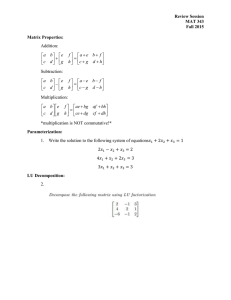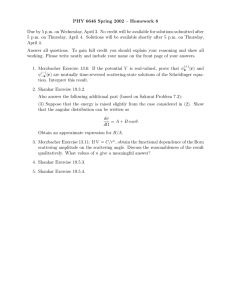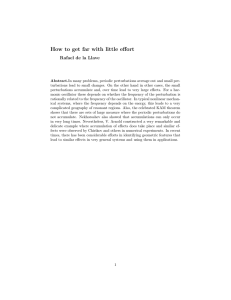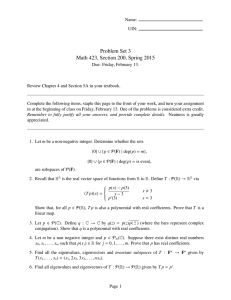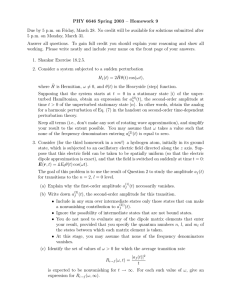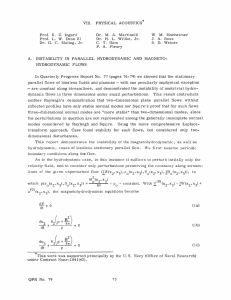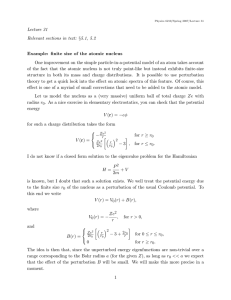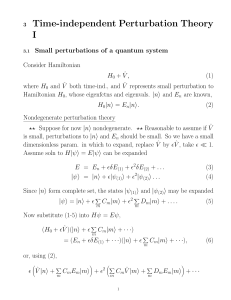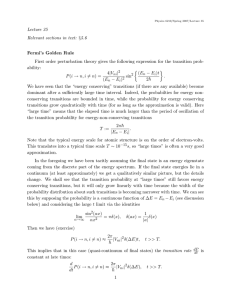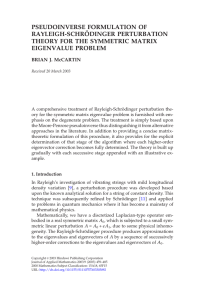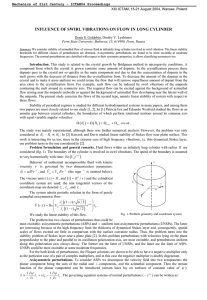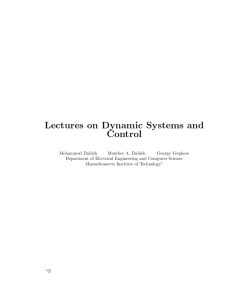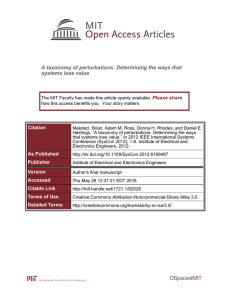PHY 6646 Spring 2003 – Homework 6
advertisement
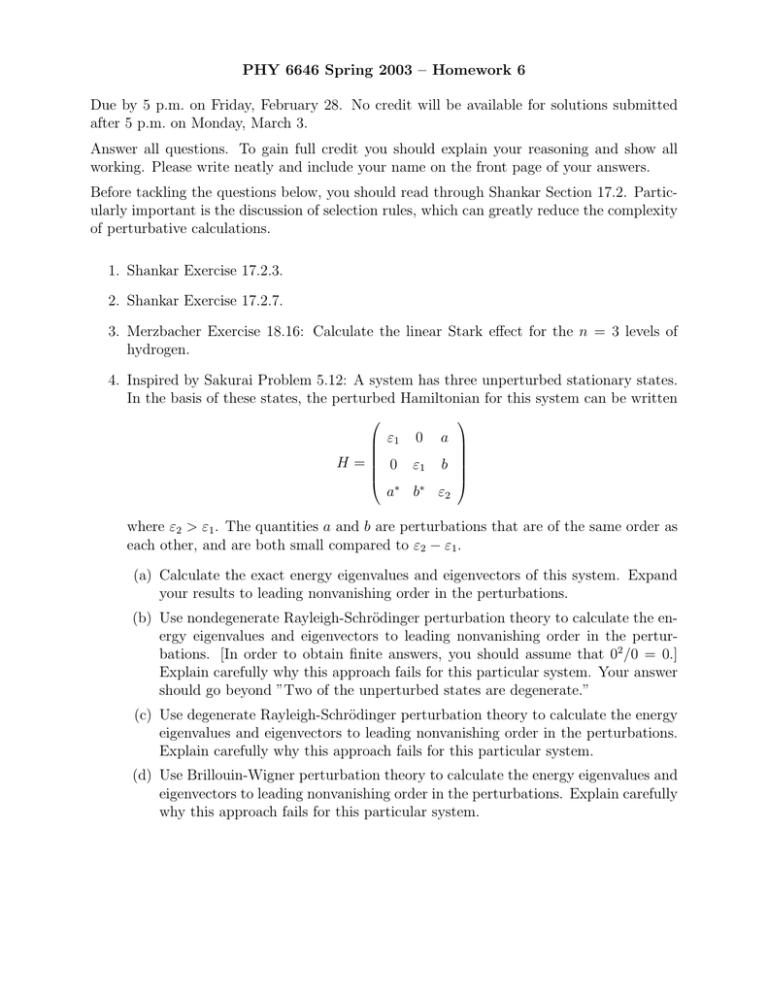
PHY 6646 Spring 2003 – Homework 6 Due by 5 p.m. on Friday, February 28. No credit will be available for solutions submitted after 5 p.m. on Monday, March 3. Answer all questions. To gain full credit you should explain your reasoning and show all working. Please write neatly and include your name on the front page of your answers. Before tackling the questions below, you should read through Shankar Section 17.2. Particularly important is the discussion of selection rules, which can greatly reduce the complexity of perturbative calculations. 1. Shankar Exercise 17.2.3. 2. Shankar Exercise 17.2.7. 3. Merzbacher Exercise 18.16: Calculate the linear Stark effect for the n = 3 levels of hydrogen. 4. Inspired by Sakurai Problem 5.12: A system has three unperturbed stationary states. In the basis of these states, the perturbed Hamiltonian for this system can be written ε1 H= 0 0 ε1 a b a∗ b ∗ ε 2 where ε2 > ε1 . The quantities a and b are perturbations that are of the same order as each other, and are both small compared to ε2 − ε1 . (a) Calculate the exact energy eigenvalues and eigenvectors of this system. Expand your results to leading nonvanishing order in the perturbations. (b) Use nondegenerate Rayleigh-Schrödinger perturbation theory to calculate the energy eigenvalues and eigenvectors to leading nonvanishing order in the perturbations. [In order to obtain finite answers, you should assume that 02 /0 = 0.] Explain carefully why this approach fails for this particular system. Your answer should go beyond ”Two of the unperturbed states are degenerate.” (c) Use degenerate Rayleigh-Schrödinger perturbation theory to calculate the energy eigenvalues and eigenvectors to leading nonvanishing order in the perturbations. Explain carefully why this approach fails for this particular system. (d) Use Brillouin-Wigner perturbation theory to calculate the energy eigenvalues and eigenvectors to leading nonvanishing order in the perturbations. Explain carefully why this approach fails for this particular system.



